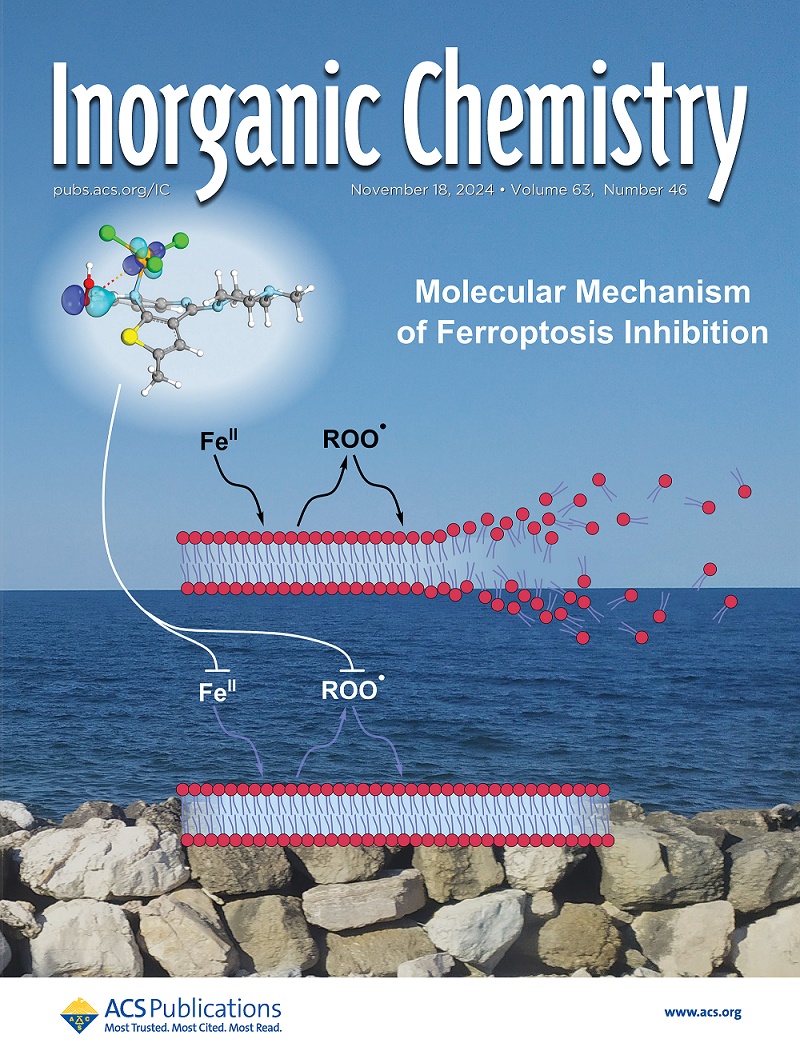快速去除Cs+和Sr2的可渗透层状硫化锡离子交换剂。
IF 4.7
2区 化学
Q1 CHEMISTRY, INORGANIC & NUCLEAR
引用次数: 0
摘要
制备了一种多孔层状硫化锡材料[(CH3)2NH2]2Sn3S7·0.4H2O (sn -1),用于快速去除水溶液中的Cs+和Sr2+。六角形窗口(横截面8.3 × 8.3 Å2)在堆叠层上的对齐形成了直接的伪通道,使有效的离子扩散和容纳成为可能。sn -1表现出优异的离子交换动力学(k2Cs = 0.256 g mg-1 min-1;k2Sr = 0.272 g mg-1 min-1)和容量(qmCs = 417.24 mg-1;qmSr = 116.18 mg g-1),超过大多数硫族交换剂。它在很宽的pH范围内(0-11)具有耐酸碱性,对Cs+和Sr2+的选择性优于各种竞争离子。动态柱过滤证实了SnS-1的分离适用性,对Cs+ (RCs = -20±5%)具有持续的Sr2+去除效果(RSr = 94.45-99.51%)。在连续流(2.0 mL min-1 cm-2)中,sn -1/PTFE复合膜能高效去除Cs+和Sr2+,去除率分别超过91.71和98.91%。此外,吸附的Cs+和Sr2+离子可以很容易地用2 M NaCl溶液从废柱和膜中洗脱出来。微孔sn -1具有合成简单、辐射降解稳定、性能优越等优点,是一种很有前途的核废水修复材料。本文章由计算机程序翻译,如有差异,请以英文原文为准。
Permeable Layered Tin Sulfide Ion Exchanger for Rapid Elimination of Cs+ and Sr2.
A porous layered tin sulfide material, [(CH3)2NH2]2Sn3S7·0.4H2O (SnS-1), is developed for rapid Cs+ and Sr2+ removal from aqueous solutions. The alignment of hexagonal windows (8.3 × 8.3 Å2 in cross-section) across the stacked layers forms straight pseudochannels that enables effective ion diffusion and accommodation. SnS-1 exhibits outstanding ion exchange kinetics (k2Cs = 0.256 g mg-1 min-1; k2Sr = 0.272 g mg-1 min-1) and capacities (qmCs = 417.24 mg g-1; qmSr = 116.18 mg g-1), exceeding most chalcogenide-based exchangers. It exhibits acid-base resistance across a broad pH range (0-11) and remarkable selectivity for Cs+ and Sr2+ over various competing ions. Dynamic column filtration confirms the separation applicability of SnS-1, featuring sustained Sr2+ removal (RSr = 94.45-99.51%) against Cs+ (RCs = -20 ± 5%). The SnS-1/PTFE composite membrane can efficiently remove Cs+ and Sr2+ from continuous flow (2.0 mL min-1 cm-2), with removal efficiencies exceeding 91.71 and 98.91%, respectively. Moreover, the adsorbed Cs+ and Sr2+ ions can be readily eluted from the spent column and membrane using a 2 M NaCl solution. Combined with simple synthesis, radiolytic stability, and superior performance, microporous SnS-1 emerges as a promising candidate for nuclear wastewater remediation.
求助全文
通过发布文献求助,成功后即可免费获取论文全文。
去求助
来源期刊

Inorganic Chemistry
化学-无机化学与核化学
CiteScore
7.60
自引率
13.00%
发文量
1960
审稿时长
1.9 months
期刊介绍:
Inorganic Chemistry publishes fundamental studies in all phases of inorganic chemistry. Coverage includes experimental and theoretical reports on quantitative studies of structure and thermodynamics, kinetics, mechanisms of inorganic reactions, bioinorganic chemistry, and relevant aspects of organometallic chemistry, solid-state phenomena, and chemical bonding theory. Emphasis is placed on the synthesis, structure, thermodynamics, reactivity, spectroscopy, and bonding properties of significant new and known compounds.
 求助内容:
求助内容: 应助结果提醒方式:
应助结果提醒方式:


